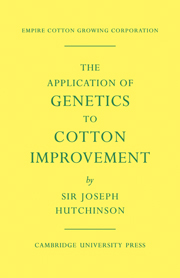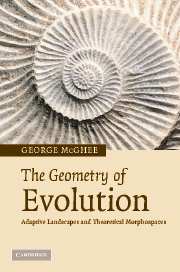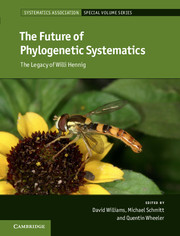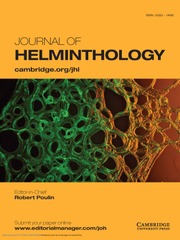Next Generation Systematics
$103.00 ( ) USD
Part of Systematics Association Special Volume Series
- Editors:
- Peter D. Olson, Natural History Museum, London
- Joseph Hughes, University of Glasgow
- James A. Cotton, Wellcome Trust Sanger Institute, Cambridge
- Date Published: June 2016
- availability: This ISBN is for an eBook version which is distributed on our behalf by a third party.
- format: Adobe eBook Reader
- isbn: 9781316655450
Find out more about Cambridge eBooks
$
103.00 USD
( )
Adobe eBook Reader
Other available formats:
Hardback
Looking for an examination copy?
This title is not currently available for examination. However, if you are interested in the title for your course we can consider offering an examination copy. To register your interest please contact [email protected] providing details of the course you are teaching.
-
We live in an age of ubiquitous genomics. Next generation sequencing (NGS) technology, both widely adopted and advancing at pace, has transformed the data landscape, opening up an enormous source of heritable characters to the comparative biologist. Its impact on systematics, like many other fields of biology, has been felt throughout its breadth: from defining species boundaries to estimating their evolutionary histories. This volume examines the broad range of ways in which NGS data are being used in systematics and in the fields that it underpins, from biodiversity prospecting to evo-devo. Experts in their fields draw on contemporary case studies to demonstrate state-of-the-art applications of NGS data. These, along with novel analyses, comprehensive reviews and lively perspectives, are combined to produce an authoritative account of contemporary issues in systematics that have been impacted by the adoption of NGS.
Read more- Leading researchers explore the broad range of ways in which next generation sequencing (NGS) data are being used in systematics and in the fields that it underpins, from biodiversity prospecting to evo-devo
- Provides case studies of how NGS data are being used for state-of-the-art evolutionary studies in systematics and related fields
- Forward-looking perspectives introduce and comment on trends in contemporary systematics, placing research-focused chapters in context and reflecting the latest developments in a fast-moving field
Reviews & endorsements
'… the book provides a very good overview of how the field of systematics is being shaped by the impact of a promising technology. In focusing on the major achievements and the challenges ahead it conveys a realistic vision for the future. One that has the potential to motivate many readers to embrace these approaches or to focus on solving the mentioned challenges.' Toni Gabaldón, The Quarterly Review of Biology
Customer reviews
Not yet reviewed
Be the first to review
Review was not posted due to profanity
×Product details
- Date Published: June 2016
- format: Adobe eBook Reader
- isbn: 9781316655450
- contains: 40 b/w illus. 8 colour illus. 5 tables
- availability: This ISBN is for an eBook version which is distributed on our behalf by a third party.
Table of Contents
List of contributors
Introduction: studying diversity in an age of ubiquitous genomics James A. Cotton and Peter D. Olson
Part I. Next Generation Phylogenetics:
1. Perspective: challenges in assembling the 'next generation' tree of life Michael J. Sanderson
2. The role of next generation sequencing technologies in shaping the future of insect molecular systematics Joseph Hughes and Stuart Longhorn
3. Phylogenetics of Nematoda Mark Blaxter, Georgios Koutsovoulos, Martin Jones, Sujai Kumar and Ben Elsworth
4. High throughput multiplexed mitogenomics for metazoans-prospects and limitations Peter G. Foster, Maria Stalteri, Andrea Waeschenbach and D. Timothy J. Littlewood
5. Investigating bacterial microevolution through next generation sequencing Josephine M. Bryant and Simon R. Harris
Part II. Next Generation Biodiversity Science:
6. Perspective: après le déluge: ubiquitous field barcoding should drive twenty-first-century taxonomy Richard M. Bateman
7. Perspective: biodiversity and the (data) beast Holly M. Bik and W. Kelley Thomas
8. Next generation biodiversity analysis Mehrdad Hajibabaei and Ian King
9. Protist systematics, ecology and next generation sequencing David Bass and Thomas Bell
Part III. Next Generation Challenges and Questions:
10. Perspective: systematics in the age of genomics Antonis Rokas
11. Perspective: the role of next generation sequencing for integrative approaches to evolutionary biology Ralf J. Sommer
12. Next generation apomorphy: the ubiquity of taxonomically restricted genes Paul A. Nelson and Richard J. A. Buggs
13. Utilizing next generation sequencing for evo-devo study of plant traits Rachael H. Walker, Paula J. Rudall and Beverley J. Glover
14. An NGS approach to archaeobotanical museum specimens as genetic resources in systematics research Oliver Smith, Sarah A. Palmer, Rafal Gutaker and Robin G. Allaby
15. From sequence reads to evolutionary inferences James A. Cotton
Index.
Sorry, this resource is locked
Please register or sign in to request access. If you are having problems accessing these resources please email [email protected]
Register Sign in» Proceed
You are now leaving the Cambridge University Press website. Your eBook purchase and download will be completed by our partner www.ebooks.com. Please see the permission section of the www.ebooks.com catalogue page for details of the print & copy limits on our eBooks.
Continue ×Are you sure you want to delete your account?
This cannot be undone.
Thank you for your feedback which will help us improve our service.
If you requested a response, we will make sure to get back to you shortly.
×






